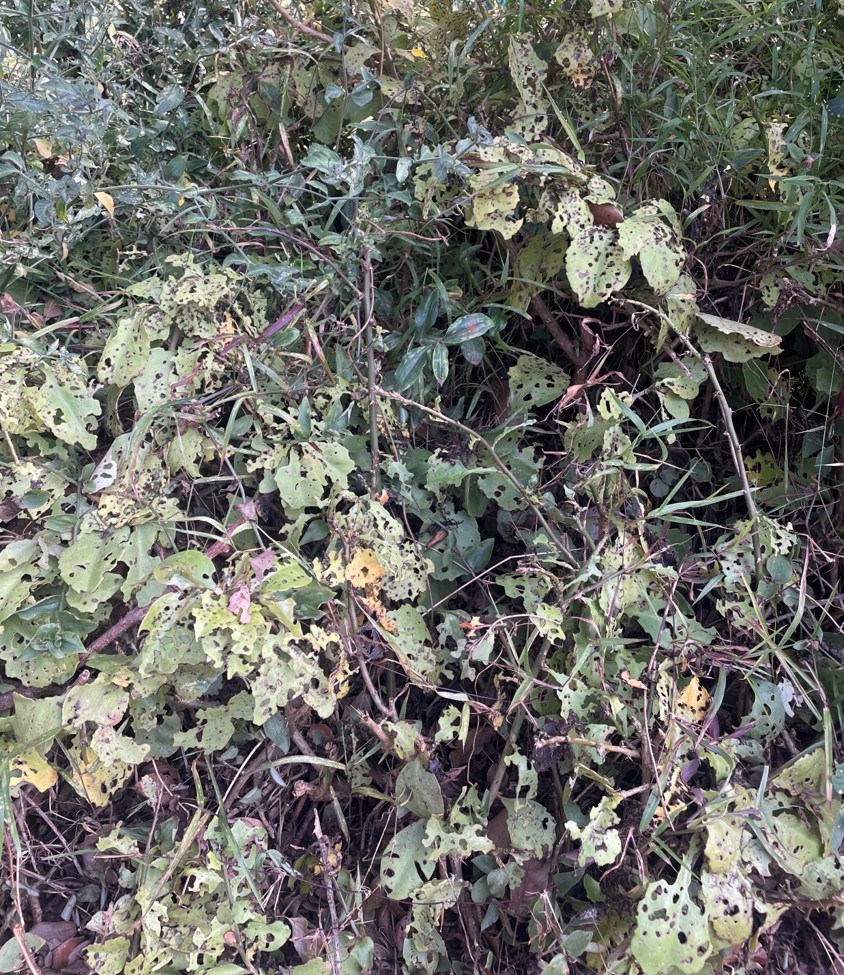.jpg)
Leaf-cactus (Pereskia aculeata), a spiny creeping plant from Brazil, is a serious threat to indigenous biodiversity in both South Africa and Australia, where it is an invasive alien pest. In South Africa, the flea-beetle Phenrica guerini is a damaging biological control agent for leaf-cactus. The flea-beetle was released in 1991 and is now widely established in the country and feeds on the leaves and shoots of the weed. Experiments in South Africa have shown that the beetle reduces the number of leaves of P. aculeata by over 250 leaves per m2 and percentage cover of the weed by 38% at sites where the agent is abundant (see damage below). Leaf-cactus is becoming more and more problematic in Australia, so the New South Wales Department of Primary Industry has been collaborating with the CBC to determine if the flea-beetle is safe for release in Australia. MSc student, Elizabeth Dixon, conducted host specificity tests to demonstrate that the flea-beetle is safe for release in Australia, and will not damage any other plants besides leaf-cactus if it is released. Her work has recently been published in Biocontrol Science and Technology (https://doi.org/10.1080/09583157.2023.2214342) and will hopefully be the first step towards releasing Phenrica guerini in Australia, and reducing the negative impacts leaf-cactus is having on Australian biodiversity.

This project has been supported by a series of successive investments from the NSW Government through its Environmental Trust, and in-kind co-investments by CSIRO, NSW Department of Primary Industries and NSW Department of Planning and Environment. The South African Pereskia aculeata programme was funded by the Department of Forestry, Fisheries and the Environment (DFFE): Natural Resource Management Programme (NRMP).
